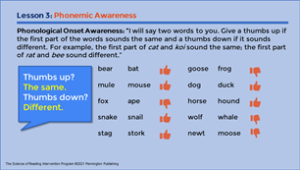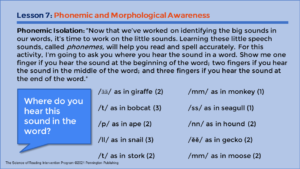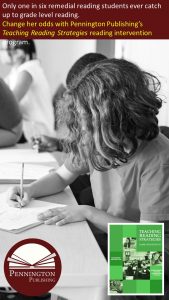Reading and Spelling Assessments
Following are accurate and teachable diagnostic phonemic awareness, reading, and spelling assessments with audio files, Google forms, Google sheets, and corresponding recording matrices to help teachers determine what students know and what they do not know. All but one assessment (fluency) are whole class assessments. Each assessment is comprehensive, not a random sample, to enable teachers to teach to the results of each test item. The author’s ELA/reading programs provide the resources for assessment-based whole class and individualized instruction. Click on the blue links for the assessment resources and check out the author’s programs, which provide the instructional resources to teach to each assessment.
Diagnostic Reading Assessments
Phonemic Awareness Assessments (Printable Copies)
Use these five phonemic awareness (syllable awareness, syllable rhyming, phonemic isolation, phonemic blending, phonemic segmenting) to determine reading readiness. Each of the five assessments is administered whole class. The author’s half-year or 30 minutes per day Science of Reading Intervention Program (word recognition) and full-year Teaching Reading Strategies (word recognition and language comprehension) reading intervention programs include corresponding phonemic awareness and alphabetic awareness activities to remediate all deficits indicated by the assessments.
- Syllable Awareness Assessment (5:48 Audio File)
- Syllable Rhyming Assessment (5:38 Audio File)
- Phonemic Isolation Assessment (5:54 Audio File)
- Phonemic Blending Assessment (5:53 Audio File)
- Phonemic Segmenting Assessment (5:21 Audio File)
Vowel Sounds Phonics Assessment
(Printable Copy with Links to 10:42 Audio File, Google Forms, and Google Sheets)*
Printable and digital testing options: Use this comprehensive 52 item whole class assessment to determine your students’ mastery of short vowels, long vowels, silent final e, vowel digraphs, vowel diphthongs, and r-controlled vowels. The assessment uses nonsense words to test students’ knowledge of the sound-spellings to isolate the variable of sight word recognition. Unlike other phonics assessments, this assessment is not a random sample of phonics knowledge. The Vowel Sounds Phonics Assessment includes every common sound-spelling. Thus, the results of the assessment permit targeted instruction in any vowel sound phonics deficits. The author’s Teaching Reading Strategies reading intervention program includes corresponding worksheets and small group activities to remediate all deficits indicated by this assessment.
Consonant Sounds Phonics Assessment
(Printable Copy with Links to 12:07 Audio File, Google Forms, and Google Sheets)*
Printable and digital testing options: Use this comprehensive 50 item whole class assessment to determine your students’ mastery of consonant digraphs, beginning consonant blends, and ending consonant blends. The assessment uses nonsense words to test students’ knowledge of the sound-spellings to isolate the variable of sight word recognition. Unlike other phonics assessments, this assessment is not a random sample of phonics knowledge. The Consonant Sounds Phonics Assessment includes every common sound-spelling. Thus, the results of the assessment permit targeted instruction in any consonant sound phonics deficits. The author’s Teaching Reading Strategies reading intervention program includes corresponding worksheets and small group activities to remediate all deficits indicated by this assessment.
Heart Words Assessment (Printable Copy)
Use this 108 item whole class assessment to determine your students’ mastery of the most common English words with one or more “parts to learn by heart.” The author’s Teaching Reading Strategies structured literacy intervention program includes small group activities to remediate all deficits indicated by this 15-minute assessment. The program includes 3,000+ Google slides with two Heart Words in each of the 54 lessons, plus special interactive practice with these tricky words. The program also provides heart Words game card masters and individual sets of business card size game cards in the accompanying Reading and Spelling Game Cards.
The Pets Fluency Assessment (Printable Copy)
The “Pets” expository fluency passage is leveled in a unique pyramid design: the first paragraph is at the first grade (Fleish-Kincaid) reading level; the second paragraph is at the second grade level; the third paragraph is at the third grade level; the fourth paragraph is at the fourth grade level; the fifth paragraph is at the fifth grade level; the sixth paragraph is at the sixth grade level; and the seventh paragraph is at the seventh grade level. Thus, the reader begins practice at an easier level to build confidence and then moves to more difficult academic language. As the student reads the fluency passage, the teacher will be able to note the reading levels at which the student has a high degree of accuracy and automaticity. Automaticity refers to the ability of the reader to read effortlessly without stumbling or sounding-out words. The 383 word passage permits the teacher to assess two-minute reading fluencies (a much better measurement than a one-minute timing).
 Diagnostic Spelling Assessment
Diagnostic Spelling Assessment
Following are accurate and teachable spelling assessments and corresponding recording matrices to help teachers determine what students know and what they do not know. Each assessment is comprehensive, not a random sample, to enable teachers to teach to the results of each test item. The author’s spelling programs provide the resources for assessment-based whole class and individualized instruction. Click on the blue links for the assessment resources and check out the author’s programs, which provide the instructional resources to teach to each assessment.
Administer part or all of the Diagnostic Spelling Assessment (American English Version) test items, according to grade-level criteria.
- Grade 2: K-1 spelling patterns (#s 1‒41)
- Grade 3: K-3 spelling patterns (#s 1‒55)
- Grade 4: K-3 spelling patterns (#s 1‒64)
- Grade 5: K-4 spelling patterns (#s 1‒82)
- Grade 6: K-5 spelling patterns (#s 1‒100)
- Grade 7: K-6 spelling patterns(#s 1‒102)
Administer part or all of the Diagnostic Spelling Assessment (Canadian English Version) test items, according to grade-level criteria
- Grade 2: K-1 spelling patterns (#s 1‒41)
- Grade 3: K-3 spelling patterns (#s 1‒55)
- Grade 4: K-3 spelling patterns (#s 1‒64)
- Grade 5: K-4 spelling patterns (#s 1‒82)
- Grade 6: K-5 spelling patterns (#s 1‒100)
- Grade 7: K-6 spelling patterns(#s 1‒102)
- Grade 8: K-7 spelling patterns (#s 1‒106)
The test items are grouped by spelling patterns e.g., the four long /i/ spellings, to make posttest analysis simple. All spelling words are multi-syllabic to prevent students from identifying the words by “sight spellings” and to require recognition of the sound-spelling patterns within the context of syllables.
Assessment Formats
Choose the Diagnostic Spelling Assessment format which best suits your needs:
1. Printable Only: Teacher dictates the number of test items assigned to the grade levels, following the written administrative protocol. Students take the test on binder paper. Teacher corrects assessments according to directions and records spelling deficits on the Spelling Patterns Assessment Mastery Matrix.
American English Resources: Diagnostic Spelling Assessment teacher administration form; Spelling Patterns Assessment Mastery Matrix.
Canadian English Resources: Diagnostic Spelling Assessment teacher administration form; Spelling Patterns Assessment Mastery Matrix.
2. Audio and Printable: Teacher plays the “normal speed” Diagnostic Spelling Assessment audio file for grades 4, 5, and 6 students or the “quick version” Diagnostic Spelling Assessment audio file for grades 7 and 8 students. The audio file includes all administrative directions. Students take the test on binder paper. Teacher corrects assessments according to directions and records spelling deficits on the Spelling Patterns Assessment Mastery Matrix.
American English Resources: Diagnostic Spelling Assessment with the “normal speed” 22:38 audio file; Diagnostic Spelling Assessment with the “quick version 17:26 audio file; Spelling Patterns Assessment Matrix.
Canadian English Resources: Diagnostic Spelling Assessment with the “normal speed” 21:12 audio file; Diagnostic Spelling Assessment with the “quick version 18:53 audio file; Spelling Patterns Assessment Matrix. Audio files recorded by a Toronto teacher. Thanks!
3. Google Forms: Teacher shares either the Diagnostic Spelling Assessment Google Form with the “normal speed” for grades 4, 5, and 6 students or the form with the “quick version” for grades 7 and 8 students. Note that incorrect spellings with be accompanied by the Google red squiggly line indicating a spelling error. Students may be tempted to right click the word and select the correct spelling; however, if the teacher tells the students the purpose of the test and directs them not to self-correct, students will generally follow instructions. Telling students that they will receive the same amount of credit whether the spelling is accurate or not, and using the “quick version” audio also helps students avoid the temptation of cheating. Teacher uploads the students’ Google Forms into the Spelling Patterns Assessment Mastery Matrix Google Sheets.
American English Resources: Diagnostic Spelling Assessment Google Forms with the “normal speed” 22:38 audio file for grades 4, 5, and 6 students or the Diagnostic Spelling Assessment Google Forms with the “quick version: 17:26 audio file for grades 7 and 8 students; Spelling Patterns Assessment Mastery Matrix Google Sheets.
Canadian English Resources: Diagnostic Spelling Assessment Google Forms with the 21:10 “normal speed” audio file for grades 4, 5, and 6 students or the Diagnostic Spelling Assessment Google Forms with the 18:53 “quick version” audio file for grades 7 and 8 students; Spelling Patterns Assessment Mastery Matrix Google Sheets.
*****

American English
RECOMMENDED SPELLING PROGRAMS APPLYING ASSESSMENT-BASED INSTRUCTION
Differentiated Spelling Instruction Grades 4, 5, 6, 7, and 8 American English Programs
*****

The Science of Reading Intervention Program
The Science of Reading Intervention Program: Word Recognition includes explicit, scripted instruction and practice with the 5 Daily Google Slide Activities every reading intervention student needs: 1. Phonemic Awareness and Morphology 2. Blending, Segmenting, and Spelling 3. Sounds and Spellings (including handwriting) 4. Heart Words Practice 5. Sam and Friends Phonics Books (decodables). Plus, digital and printable sound wall cards and speech articulation songs. Print versions are available for all activities. First Half of the Year Program (55 minutes-per-day, 18 weeks)
The Science of Reading Intervention Program: Language Comprehension resources are designed for students who have completed the word recognition program or have demonstrated basic mastery of the alphabetic code and can read with some degree of fluency. The program features the 5 Weekly Language Comprehension Activities: 1. Background Knowledge Mentor Texts 2. Academic Language, Greek and Latin Morphology, Figures of Speech, Connotations, Multiple Meaning Words 3. Syntax in Reading 4. Reading Comprehension Strategies 5. Literacy Knowledge (Narrative and Expository). Second Half of the Year Program (30 minutes-per-day, 18 weeks)
The Science of Reading Intervention Program: Assessment-based Instruction provides diagnostically-based “second chance” instructional resources. The program includes 13 comprehensive assessments and matching instructional resources to fill in the yet-to-be-mastered gaps in phonemic awareness, alphabetic awareness, phonics, fluency (with YouTube modeled readings), Heart Words and Phonics Games, spelling patterns, grammar, usage, and mechanics, syllabication and morphology, executive function shills. Second Half of the Year Program (25 minutes-per-day, 18 weeks)
The Science of Reading Intervention Program BUNDLE includes all 3 program components for the comprehensive, state-of-the-art (and science) grades 4-adult full-year program. Scripted, easy-to-teach, no prep, no need for time-consuming (albeit valuable) LETRS training or O-G certification… Learn as you teach and get results NOW for your students. Print to speech with plenty of speech to print instructional components.
 with phoneme isolation, addition, deletions, substitution, manipulation, segmentation, and reversals. The teacher completes 3 of these lessons per week (typically Monday, Tuesday, and Wednesday). The teacher displays the slide for in-class instruction or shares the screen for ZOOM instruction, reads the slide information, and provides cues for unison responses. No prep required. Only teacher slides are provided for this activity. If you would like to preview the 5 Daily Google Slide Activities, including the phonemic awareness drills, check out this
with phoneme isolation, addition, deletions, substitution, manipulation, segmentation, and reversals. The teacher completes 3 of these lessons per week (typically Monday, Tuesday, and Wednesday). The teacher displays the slide for in-class instruction or shares the screen for ZOOM instruction, reads the slide information, and provides cues for unison responses. No prep required. Only teacher slides are provided for this activity. If you would like to preview the 5 Daily Google Slide Activities, including the phonemic awareness drills, check out this 





